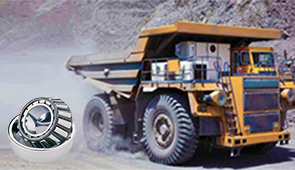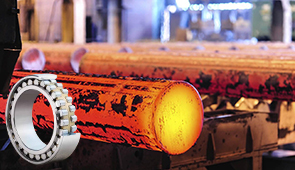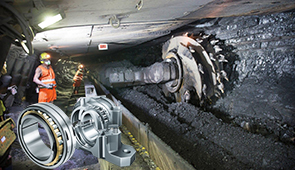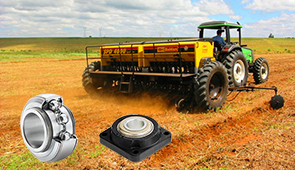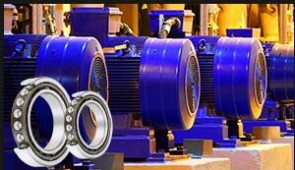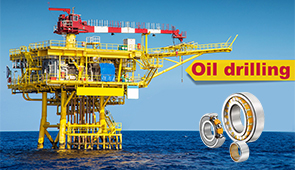What is Lubricant Oil Used For: Understanding Types and Choosing the Right Lube
Lubricant oil plays a crucial role in the performance and longevity of machinery, engines, and countless mechanical systems. From reducing friction and wear to dissipating heat and preventing corrosion, its applications are vast and essential across various industries. However, with so many types of lubricants available—each tailored for specific purposes—understanding which one to choose can be an overwhelming task. This article dives into the fundamentals of lubricant oil, exploring its primary uses, the different types available, and practical tips for selecting the right one for your needs. Whether you’re an industry professional or a machinery enthusiast, this guide will equip you with the knowledge to make informed decisions and keep your equipment running smoothly.
Primary Uses of Lubricant Oil Across Industries
Automotive Applications of Motor Oil
Owing to this, motor oil becomes a lifeblood for any automotive engine, keeping all parts moving smoothly by lessening any friction between components. It forms a lubricating film that reduces metal-to-metal contact so that they do not wear away mechanically. It further bathes in heat generated from combustion processes, thereby preventing engine overheating, from which it attains optimum performance.
Motor oil is utilized for lubrication purposes, plus cleaning and protecting the engine. It can trap and suspend contaminants such as dirt, debris, and metal particles that could form blockages, hence damaging the engine. Most modern motor oils contain detergent or dispersant additive packages that break down sludge, keeping the engine clean and operating efficiently; hence, it is important to change the oil regularly as it loses its ability over time after pickingup various impurities.
Fuel efficiency and energy conservation constitute another area in which motor oil is considered. An engine that is well-lubricated experiences minimal resistance and hence runs smoothly, requiring less fuel for operation. Oils of an appropriate grade and type, as recommended by the vehicle manufacturer, will resonate well with the engine, thus able to deliver performance during all operating conditions. Choosing the right oil and proper maintenance can go a long way in assuring the genuine durability and dependability of an automotive engine.
Manufacturing and Industrial Lubrication
Lubrication is an essential manufacturing and industrial process vital to providing efficiency, reliability, and durability to machines. By providing lubrication and friction minimization between two moving parts, it causes wear and tear to a minimum, hence the maintenance cost too. Bearing a lubrication product in mind is essential to any industrial system, as this would affect its operational characteristics and efficient functioning. Various lubrication techniques are used: oil bath, grease applications, and automatic lubrication systems. Each of these processes suits a particular operating condition and machinery.
Lubrication plays a major part in reducing energy consumption. Mechanical systems with good lubrication undergo reduced friction and hence require less energy for carrying out operations. As a corollary, this aids in greener industrial processes and ultimately saves a reasonable amount of money over time. Corroborating the above statements is the other fact that modern-day lubricants contain additives that impart corrosion resistance to metals, heat-dissipation properties, and load-bearing capacity improvements, enabling them to be used in most arduous manufacturing applications.
Being subjected to a very rigorous lubrication program is most important in industry, as Downtime and sudden breakdowns of capital equipment can cause huge productive losses. Intermittent monitoring, analysis, and maintenance of lube systems ensures that systems work consistently and perform in utility. By specifying high-quality lubricants, using them correctly, and performing periodic assessments, the manufacturer can fulfill operational requirements, extend useful equipment life, and avoid unnecessary expenses.
Aviation and Marine Lubricant Uses
Lubricants in the aviation and marine industries are essential for operational reliability, efficiency, and safety. Oils are formulated to work in turbojet engines, piston engines, hydraulic systems, and gear systems of the utmost precision in viscosity and thermal stability to avoid wear and enable prime function. Aviation lubricant formulations, therefore, are measured against very stringent certifications alongside the SAE and MIL-SPEC used in modern industry.
Similarly, marine lubricants are prepared to cater to vessel needs according to the harsh environmental conditions in saltwater, heavy loads, and prolonged working periods. Elevating marine engine oils, gear oils, and hydraulic fluids resist wear and corrosion while performing under adverse conditions. Cylinder oils protect components of two-stroke engines used commonly in large ships.
Both domains focus essentially on enhancing fuel economy and emission reduction as primary criteria, which additive technology supports. High-performance lubricants enhance engine cleanliness, lessen deposits, and help sustainability by reducing friction with enhanced equipment life. Data-driven condition monitoring with regular lubricant analysis enables operators to detect security breaches at an early stage, minimizing asset downtime and maximizing asset performance.
Benefits of Using Lubricant Oils
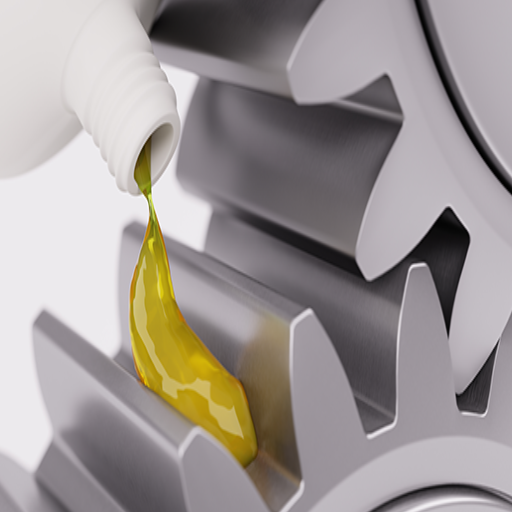
Reducing Friction and Wear
Oils and lubricants are essential for reducing friction and wear between moving surfaces, in machines, and in engines. Working under heavy load or at higher temperatures brings metal surfaces into significant wear and probable system failure. The lubricant oils get spread to form a film over the surfaces, minimizing maximum direct contact between the surfaces and sometimes acting to reduce the coefficient of friction, which is the friction between the surfaces. This improves efficiency while simultaneously saving the component from damage. Advanced formulas like synthetic oils with anti-wear additives help the oil work well in harsh operating conditions.
Liable to the quantifiable advantages such oils have to offer is the prolonged working life of equipment and engine components. Investigations have confirmed that when chosen correctly, the wear rates can be reduced on the order of 50% in the presence of some oils, thereby limiting the number of times a component must be maintained or replaced. For instance, Zinc dialkyldithiophosphates (ZDDPs), serving mainly as antiwear agents, react chemically with metal surfaces to produce wear-resistant layers. This protection is most relevant in those high-pressure points where even minimal wear could become detrimental to actual performance. The reduction in wear improves mechanical reliability and reduces expensive, high-time repairs.
By making friction and wear lower, an energy-efficient effect comes about with reduced mechanical resistance. Slight friction ensures less energy is converted to heat during operations, causing engines to have better fuel economy and industrial machinery to consume less energy. For example, studies have demonstrated that energy-efficient lubricants can bring industrial gearboxes energy savings between 1% and 3%, which may lead to heavy cost reductions over time for a large operation. Alongside lubricant monitoring and analysis, operators will put the machinery to optimal operation, extending the useful life of an asset.
Enhancing Efficiency and Performance
In order to increase equipment efficiency and performance, advanced sensor technology and real-time monitoring systems must be integrated. These systems gather critical data from temperature, pressure, and vibration, to lubricant condition, so that operators may swiftly identify inefficiencies or signs of failure. For example, predictive maintenance technologies utilize AI algorithms to analyze historical and present performance data, thus identifying early signs of wear and degradation to help reduce unplanned stoppages and improve operational reliability.
Furthermore, the cutting-edge lubricants designed for specific machinery applications will enhance performance efficiency. Lubrication chemistry innovations have achieved formulations with greater thermal stability, lower friction coefficients, and higher load capacities. Hence, such features assure huge savings in energy and reductions in greenhouse gas emissions in pursuance of sustainability on a global scale.
By leveraging accurate data analytics and optimization frameworks, operational performance is further improved. The cloud-based platform may compile machine data from various locations and turn this data into actionable insights for workflow improvement. Combining such advanced solutions positions industries for the utmost productivity at the lowest possible cost.
Prolonging Machinery Lifespan
Increasing the longevity of machinery is a multidimensional process encompassing preventive maintenance strategies, modern monitoring technologies, and a set of operational best practices. Leading the gamut of these activities is predictive maintenance, which is embedded with advanced sensors and IoT connectivity for gathering operational data in real time. Such information is then subjected to heaps of computer-intensive algorithmic processing to detect failures due to specific patterns or to predict failures before a particular instance of serious failure takes place. In this fashion, unplanned downtime gets minimized, maintenance can be effectively scheduled, and, therefore, the machinery can be maintained while sitting idle to extend further the period of usable life.
Another important factor in extending the life of machinery is the application of condition-based monitoring (CBM) techniques. The CBM processes continuously evaluate the state of a major component, such as temperature, vibrations, or lubricant quality, while operators use this data to determine when to service and what level of maintenance to perform. In connection with the use of digital twin technology to create virtual replicas of real-world machines, performance metrics can be monitored in an unprecedented way. These models simulate operational scenarios while offering suggestions designed to reduce stress to the components, thereby improving the overall efficiency and further preventing premature failures.
Furthermore, and very much more, the manufacturing specifications and industry standards are vital to ensure the longevity of the machinery. Calibration and load balancing techniques, as well as routine inspections, could reduce the risks brought in by overuse or mistreatment. Training operational staff in equipment use methods as well as teaching them about maintenance instills institutional knowledge that protects machinery health. Hence, by applying advanced solutions coupled with standardized operations, the industry can achieve enhanced performance of equipment, lower the cost of the lifecycle, and sustain operations for a long span.
Types of Lubricant Oils
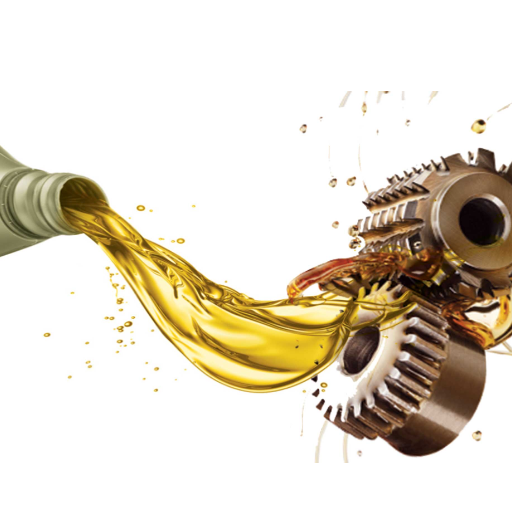
Mineral vs. Synthetic Oils
Mineral oils are cost-effective options and suit old-gen engines, given that frequent changes have to be done, whereas synthetic oils are more costly options but longer-lasting and perform better under extreme conditions.
|
Aspect |
Mineral Oil |
Synthetic Oil |
|---|---|---|
|
Price |
Low |
High |
|
Durability |
Short |
Long |
|
Efficiency |
Basic |
Advanced |
|
Heat Tolerance |
Limited |
Extreme |
|
Purity |
Lower |
Higher |
|
Application |
Older engines |
High-performance |
|
Change Rate |
Frequent |
Rare |
|
Sustainability |
Moderate |
Better |
Understanding Vegetable Oils as Lubricants
Vegetable oils that are prepared from renewable biological sources, such as soy, rapeseed, or sunflower, have more recently been studied as possible lubricants given their biodegradability and environmental benefits compared to the conventional petroleum-based products. They show very good lubrication properties, such as a high viscosity index, excellent film formation, and low friction coefficients, making them suitable for various mechanical applications.
One major distinction associated with vegetable oils is their polarity, which causes them to bind more strongly to metal surfaces and provide better boundary lubrication. However, the limitation has always been their lack of long-term stability, largely because of oxidation and thermal degradation. Chemical modification techniques have therefore been studied rigorously in recent years to counter these effects; such techniques include esterification, epoxidation, and transesterification. These can help in gaining better oxidative stability and greater applications.
Vegetable oils are at par with mineral or synthetic oils as far as lubricity goes; however, without some chemical treatment, they are unpreferred at higher temperatures and under extreme pressures. Their application goes far beyond being a lubricant for industrial machines into environmentally safe areas such as agriculture and forestry equipment. While the resolution of performance gaps is firmly under research and innovation, the future is strongly leaning toward vegetable oils-as we move toward sustainable lubrication solutions.
Unique Characteristics of Bio-Based Lubricants
The main differentiating characteristic of bio-based lubricants is their biodegradable ability. These lubricants decompose naturally and hence pose very little risk, if any, of long-term contamination, as is the case with traditional petroleum-based products. Usually, the biodegradability of the lubricants is measured through different standardized tests, ASTM D5864 being the most common one, among others, to be considered an environmental law.
In addition to being highly biodegradable, bio-based lubricants also provide excellent lubrication, thereby reducing friction and wear in mechanical parts. This may increase the life of the machinery, thus decreasing maintenance and downtime. They also have a tendency to have a high viscosity index, which means that their performance does not vary much in the face of large temperature differences. Hence, such performance makes them favorable for use in areas where being thermally stable is a requirement.
Another notable characteristic is their lower toxicity. Bio-based lubricants are derived from plant or animal sources and are less harmful to aquatic life and soil microorganisms than conventional lubricants. Hence, they are preferable for use in environmentally sensitive areas, such as marine and agricultural settings.
In spite of these advantages, problems that still warrant active research are their relatively higher cost, oxidation stability, and shelf life. Developments in additive technology and chemical modifications, such as estolides and epoxidized vegetable oils, are, however, gradually overcoming these disadvantages. This development movement will intensify the uptake of bio-based lubricants in different sectors, thus contributing to global sustainability targets.
Choosing the Right Lubricant Oil

Factors to Consider: Operating Conditions
When it comes to choosing the best lubricating oil, the operating conditions of the entire machinery or system play a crucial role. Below are some primary considerations under which a lubricant must work. At high temperatures, the oil degrades thermally and undergoes oxidation, and at low temperatures, it could foster an increase in viscosity that hinders the lubricant from reducing friction and wear. Thus, practically speaking, the temperature limits of an operation should be checked, and a lubricant should be chosen by considering those limits with respect to its viscosity indices and thermal stability.
Another principal factor to be considered is the load conditions that the lubricant will be subjected to. The oil should have a much higher film strength to withstand extreme pressures and, therefore, use extreme pressure additives so that the additives prevent two metals from coming into contact and undergoing surface wear in very high-pressure or shock-loading situations. For light loads and high-speed applications, it is more appropriate to use lower-viscosity oils with anti-foaming additives. Knowing the types of mechanical contacts, whether sliding or rolling, also helps determine the need for particular additives such as anti-wear or friction modifiers.
Lubricant choice is heavily influenced by environmental conditions. Contamination by water, dust, chemicals, or industrial pollutants requires oils bearing heavy resistance to emulsification as well as heavy filter grades. For machines operating under humid or corrosive environments, the choice of an inhibitor-bearing lubricant is essential. Careful consideration of the operational needs and their matching with a suitable lubricant ensures equipment longevity, efficiency, and reliability.
Temperature Ranges and Equipment Requirements
Operational temperature range is one of the prime factors when choosing lubricants for a particular type of machinery. Extreme temperatures, be they low or high, need special-tailored formulations to give consistent performance and wear protection. Low-temperature environments must have lubricants that have good viscosity-index stability and a pour-point depressant because they tend to thicken or even solidify. On the other hand, high temperatures call for lubricants to have very good thermal stability and excellent oxidation resistance, as oxidation takes place if there is prolonged exposure to heat.
For temperature-dynamic equipment, synthetic lubricants appear to be the better choice, for they can retain their viscosity over a wide temperature range. For instance, under 20°F (-29°C), there is a temperature condition wherein polyalphaolefin (PAO)-based synthetic will flow well enough yet form a sufficient protective film. For weathering above 250°F (121°C), machinery stands to gain much by ester-based or advanced high-temperature greases capable of resisting degradation.
Moreover, with modern equipment using high-speed bearings or precision components, the lubricant has to be ultra-low tolerance, meaning it should flow freely with minimum loss of energy due to friction. Other additives like anti-wear agents, corrosion inhibitors, and friction modifiers can be integrated to further adjust the lubricant behavior according to specific operating conditions to improve equipment life and mechanical efficiency. Proper synergy among these requirements will result in machines that hardly break down or require maintenance due to reduced downtime for repairs.
How to Choose the Right Type of Lubricant
Before choosing a lubricant, a systematic evaluation draws into perspective several important factors that may be important for the performance and durability of machinery. Consider the weathering conditions of operation: temperature ranges, humidity levels, and chances of contamination-that is, by dust, even exposure to certain chemicals. In a high-temperature environment, synthetic-based styles may be preferable because they provide viscosity stability; those operating in freezing conditions will prefer the low-temperature pour-point-ability functions.
Second is to assess the mechanical considerations, i.e., the load, the speed, and the type of motion involved-such as sliding, rolling, and oscillating motion. In high-load applications, lubricants providing synthetic fluid EP (extreme pressure) preparation are important to resist surface pitting and wear; on the other hand, low-viscosity oils may be warranted for high-speed machinery to cut down on resistance and overheating.
Third, analyze compatibility with the material specifications of the machine, including sealing elements, bearings, and metal compositions. Certain lubricants may chemically degrade or swell certain types of elastomers and metals, which brings about premature failure.
Lastly, undue attention must not be overlooked to regulatory or environmental aspects. In industries such as the food industry or agriculture, there may be a requirement for biodegradable or non-toxic lubricants to meet environmental safety standards while maintaining environmental sound performance standards. It can also be a useful practice to capitalize on industry standards and, for example, employ ISO viscosity grades or ASTM test methods to ensure the lubricant upholds a rigorous quality standard in its application.
With the complex interlinking of such considerations together with recent innovations and industrial guidelines, operators will be able to pick solutions for lubrication that best fit their needs with a performance and operational perspective.
Maintenance Tips for Effective Lubrication
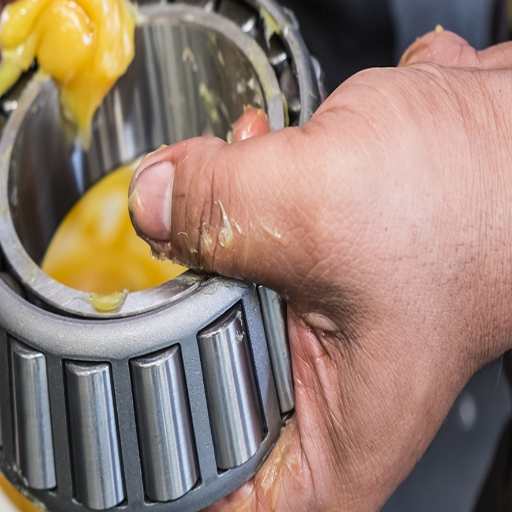
Storage Guidelines for Lubricant Oils
Optimal storage conditions need to be maintained to ensure the quality and consistent performance of oils in industrial applications. The oil, therefore, must be stored in a cool, dry place bathing somewhere between 32°F (0°C) and 104°F (40°C) in an ideal situation, to avoid thermal degradation on one hand or condensation on the other, both of which could lead to contamination. Containers must be sealed tightly, as moisture or dirt could also be a matter of contamination.
To mitigate contamination, lubricant oils are best kept on pallets or shelving; this prevents them from piling up dirt or water. They should always be stored horizontally, with openings at the 3 o’clock and 9 o’clock positions to prevent water from entering. Also, when possible, oils with different formulations should be kept separately from one another to avoid any cross-contamination.
Regular inspections of storage areas for leaks, spills, or environmental changes ensure an uninterrupted flow toward safety and quality compliance. Being stringent with these guidelines in storage would protect the integrity of lubricant oils and reduce downtime, thus increasing the life sustainment of the equipment.
Replacement Schedules for Optimal Performance
An accurate and consistent schedule for replacing lubricants is essential for ensuring good equipment performance and greatly reducing the possibility of mechanical failure. In the event of lubricant degradation owed to heat, pressure, or contaminants, its abilities would therefore be rendered ineffective. Industry standards suggest that the condition of the oil be monitored at all times (or at fixed intervals) through means that may include ferrography or spectroscopy analysis to check viscosity, contamination levels, and additive depletion rates.
An oil replacement for heavy machinery operating in extreme environments should be dependent upon the specified operating hours by the manufacturer or shortly after discernible changes in equipment performance are detected under diagnosis. For example, it has been shown that proper lubrication schedules set according to the nature of the equipment and its load during operation can increase the asset life by 30%.
With the application of predictive maintenance technologies such as sensors enabled with IoT, together with real-time analytics on the streaming data, maintenance of equipment may be scheduled as per the prevailing conditions rather than pre-set service intervals. This increases operational reliability while reducing unnecessary oil waste, which conforms to environmental sustainability interests.
Monitoring for Contamination and Degradation
Effective monitoring of lubrication oil regarding contamination and degradation is vital in maintaining the performance of the equipment and avoiding unplanned downtime. The contaminants can be anything from a myriad sources. For instance, particulate matter could get into the oil, or water, and other environmental contaminants, maybe gases like nitrogen, the reactive nature of the chemical reaction, or during certain process operations. Degradation is when lubrication properties deteriorate through oxidation, thermal heat stress, or prolonged use. So monitoring systems should incorporate strong methods to actually detect issues prior to their escalation into major equipment failure, and even gather data quantifying the issue.
Advanced technology integration has incorporated infrared spectroscopes, particle counters, and viscometers to monitor the oil’s main, i.e., Total Acid Number (TAN), water content, and viscosity index. These instruments interfere with each other to examine the oil chemically and physically, indicating abnormal behavior according to a fixed set of established criteria. For example, an abnormal increase in TAN may suggest an accelerated oxidation process, while an unusual increase in particles may indicate abrasion of some components or foreign contamination that might have entered the system. Real-time data can be solved by IoT sensors for an immediate response that spells the shortest lag time between detection and remediation.
Increasingly, predictive analytics based on machine learning concepts are being applied to contamination and degradation analysis. For instance, by analyzing historical data on engine deterioration and identifying relevant patterns that signify an occurring deterioration process, these systems can predict with great accuracy when and where potential future failure is going to occur. Riding on the goodwill of this prediction, maintenance is then preemptively locked in alignment with empirical data as opposed to a construct or fixed-service schedule. This, therefore, makes operations efficient through the use of state-of-the-art monitoring tools in conjunction with data analytics, thereby limiting risk and creating avenues for sustainability in terms of the recycling of oil and less waste.
Frequently Asked Questions (FAQ)
Q: What is lubricant oil used for in machinery?
A: Lubricant oil is used for lubricating the moving parts of a machine and thus, for reducing the friction and wear present between them. Having proper lubrication on a machine means it runs smoothly and lasts longer, as there is always a very thin layer of lubricant between metal surfaces.
Q: How does a lubricant oil reduce friction?
A: It reduces friction because lubricant oil creates a layer of lubricant between the moving parts. By minimizing the direct contact that surfaces have, it reduces heat and wear, both of which are vital for efficiency in the engines and machinery.
Q: What are the common types of lubricant oils?
A: Natural, synthetic, and vegetable oils are all common types of lubricant oils. They tend to possess different characteristics and viscosity levels, suitable for various other uses, such as automotive and industrial lubricants.
Q: What are the additives in a lubricant oil?
A: The additives in lubricant oils impart desirable properties, such as antiwear additives, viscosity index improvers, and detergents to maintain cleanliness and stability at particular temperature ranges.
Q: How does synthetic oil differ from conventional oil?
A: Synthetic oil, composed of chemical compounds, is believed to have better performance and stability than conventional oil, which is derived from crude oil. Synthetic lubricants are generally used in high-performance engines and under extreme conditions, while conventional oils find use in passenger cars under normal operating conditions.
Q: When should an oil change be carried out?
A: The oil change should be carried out according to the recommendation of the manufacturer, which is between 3,000 and 7,500 miles. Frequent oil changes help to keep the lubrication proper and the engine life longer.
Q: Is it okay to use hydraulic oil for lubrication?
A: Yes! Hydraulic oils can be used as lubricants in many other situations. They are, however, formulated to offer lubrication while transferring power in hydraulic systems, ensuring everything runs efficiently.
Q: What does viscosity do in a lubricant oil?
A: Viscosity is the thickness or flow characteristics of lubricant oil. It plays an important part in lubrication, as oils with the right viscosity can reduce friction and hold onto a steady lubricant film under all sorts of operations.
UCTH213-40J-300 with Setscrew(inch)
CNSORDERNO: Normal-duty(2)
TOGN: UCTH213-40J-300
SDI: B-R1/8
SD: 2 1/2
UCTH212-39J-300 with Setscrew(inch)
CNSORDERNO: Normal-duty(2)
TOGN: UCTH212-39J-300
SDI: B-R1/8
SD: 2 7/16
UCTH212-38J-300 with Setscrew(inch)
CNSORDERNO: Normal-duty(2)
TOGN: UCTH212-38J-300
SDI: B-R1/8
SD: 2 3/8
UCTH212-36J-300 with Setscrew(inch)
CNSORDERNO: Normal-duty(2)
TOGN: UCTH212-36J-300
SDI: B-R1/8
SD: 2 1/4
UCTH211-35J-300 with Setscrew(inch)
CNSORDERNO: Normal-duty(2)
TOGN: UCTH211-35J-300
SDI: B-R1/8
SD: 2 3/16
UCTH211-34J-300 with Setscrew(inch)
CNSORDERNO: Normal-duty(2)
TOGN: UCTH211-34J-300
SDI: B-R1/8
SD: 2 1/8









